On Now
Fire brings us 2getha
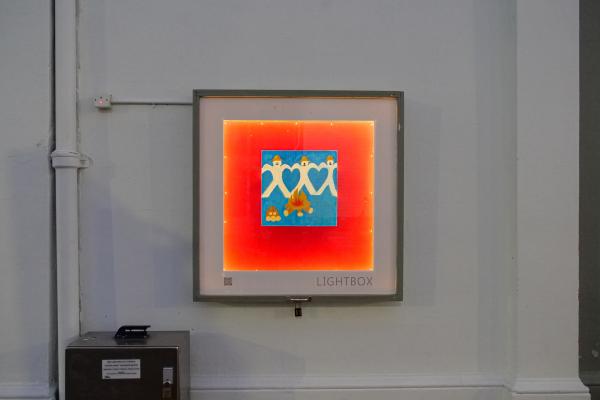
This piece explores community resilience through the invisible fabric of love. Fire in this instance suggests the warmth of care, but also the fuel of a united front, impassioned edges, and pure brightness within. Gittings uses a playful approach to colour, inspired by the Japanese and Korean artists; Mogu Takahashi and Kim Whanki. The audience is invited to consider who it is they are bound to by love, where the linkages leads, and how can you mobilise through care, to open the hearts into the pure brightness of light (fire).
Jackson Gittings is an artist and designer exploring the spaces of delicate experimentation through form. The Te Awanga raised, Pōneke based artist shares expression through self taught digital and physical painting forms that have been exhibited in Portugal, Australia, and here in Aotearoa.
Image by Maeve O’Connell
Archives
Walking in the Valley
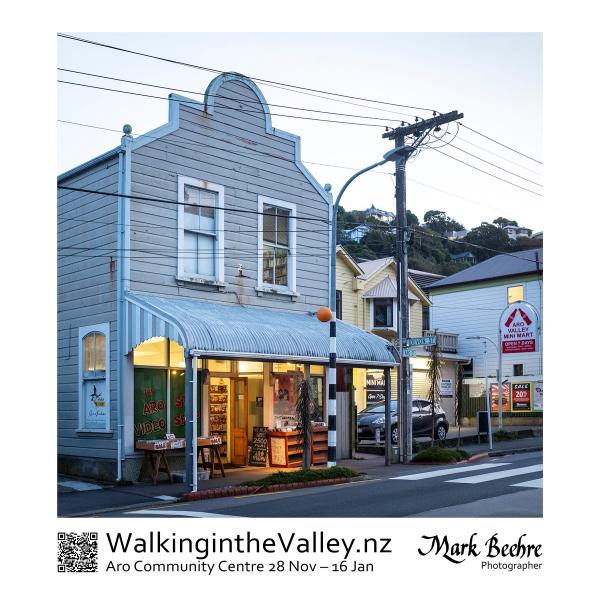
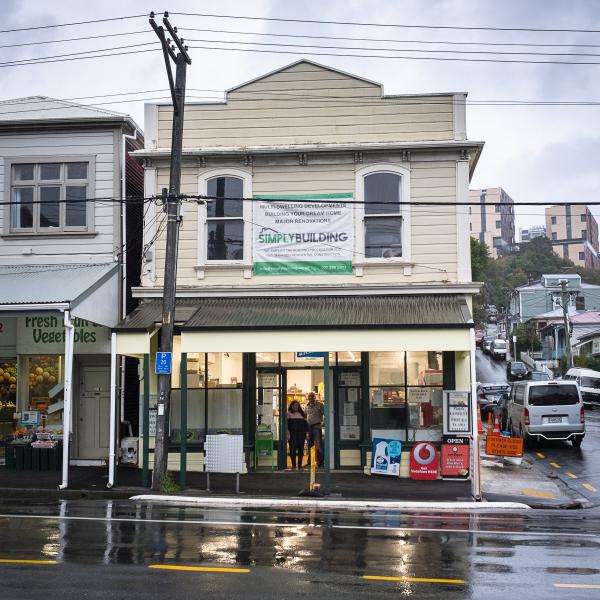
"Walking in the Valley had its origins as a purely personal, diaristic project. In 2017 I acquired a beautiful new camera, a Fujifilm X100T small enough to carry with me wherever I went, and began taking photographs of the streetscapes, houses and passers-by as I walked through on my way to the shops or the studio or work or the gym. After eight years of collecting images, I realised that my daily photo-diary had evolved into something worth sharing, and I started to put together this exhibition. Even after the first cut of images had been completed earlier this year, the valley continued to surprise me with new perspectives, and as I look back, the changes over time – a building repainted or replaced, a fence fallen down or another one built – are part of the fascination."
Mark Beehre's work sits at the intersection of documentary, portraiture and social history and is concerned with questions of identity, belonging and the life-long quest for intimacy. He is the author of Men Alone — Men Together (Steele Roberts, 2010) and A Queer Existence (Massey University Press, 2021), both of which incorporate photographic portraiture and oral history in telling the stories of two different cohorts of gay men who grew up before and after the Homosexual Law Reform Act was passed in 1986.
The exhibition is accompanied by an on-line competition organised by Sven Ericksen where anyone can submit their own photos of the valley. Visit www.walkinginthevalley.nz for details. For prints of any of the photos, visit www.markbeehre.co.nz/walking-in-the-valley-prints.
CONTACT
Email: silverimage@markbeehre.co.nz
Digital narrative . デジタル·ナラティブ
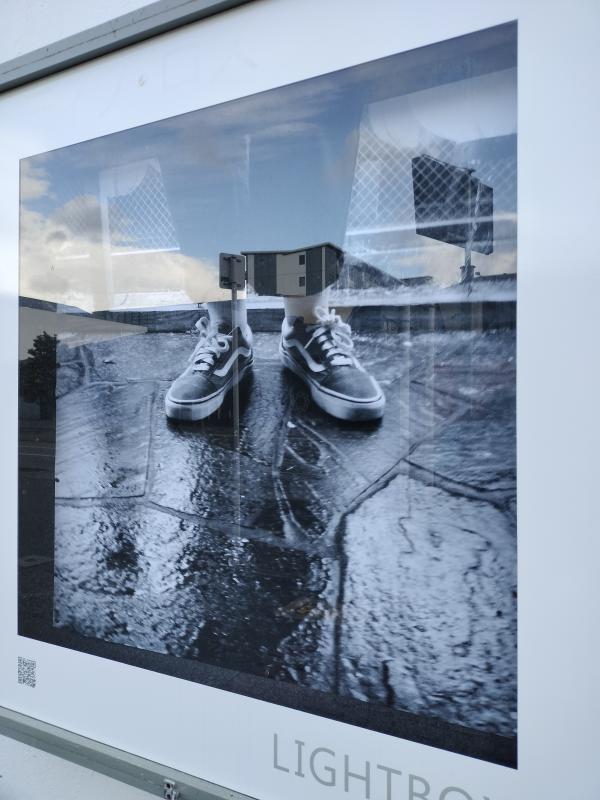
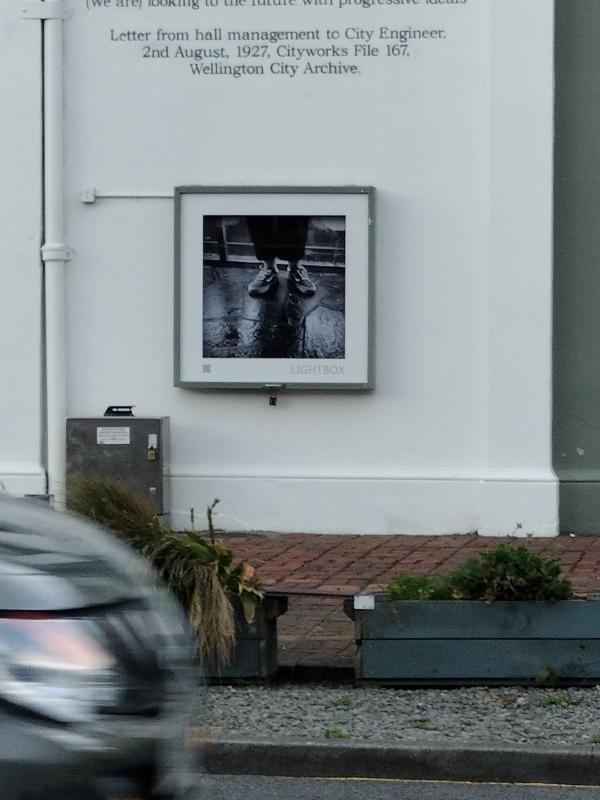
Tiso Ross is a current Postgraduate student from the Dunedin School of Art, Ōtepoti Dunedin, Aotearoa.
This series is a digital narrative consisting of 4 black and white photographic prints. The work is a response to time spent in Japan during September and October 2025. Although deviating from the earlier medium of ink drawing Tiso feels this series is an extension of the first graphic narrative. Her hope is that the work arranges space for reflection and connection when glimpsed by passersby.
Tiso lives in Motu Kairangi, Aotearoa New Zealand.
システル·ホール·ライトボックス
ティソ·ロスは、ニュージーランド、ダニーデンのオテポティにあるダニーデン美術学校の大学生です。
このシリーズは、4枚の白黒写真からなるデジタルナラティブです。これらの作品は、2025年の9月から10月にかけて日本で過ごした時に作成されました。以前のインクドローイングという作品とは異なりますが、ティソはこのシリーズが最初のグラフィックナラティブの延長線上にあると考えています。彼女は、この作品を通行人が目にした際、内省とつながりを生み出す空間となることを願っています。
ティソはニュージーランド、モツ·カイランギに住んでいます。
Images
Tiso Ross, Izakaya Kabu (居酒屋かぶ) 2025 10 04
I Miss You
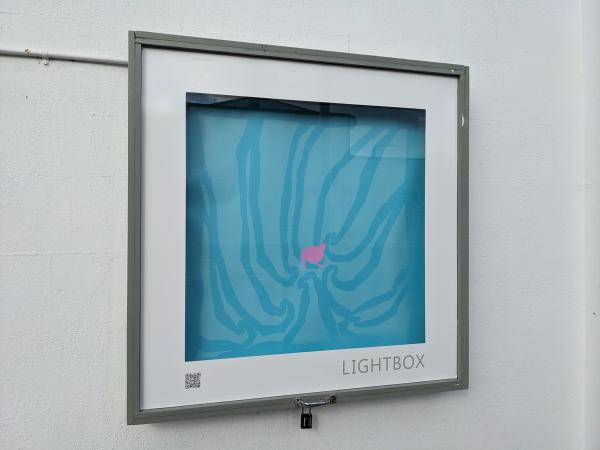
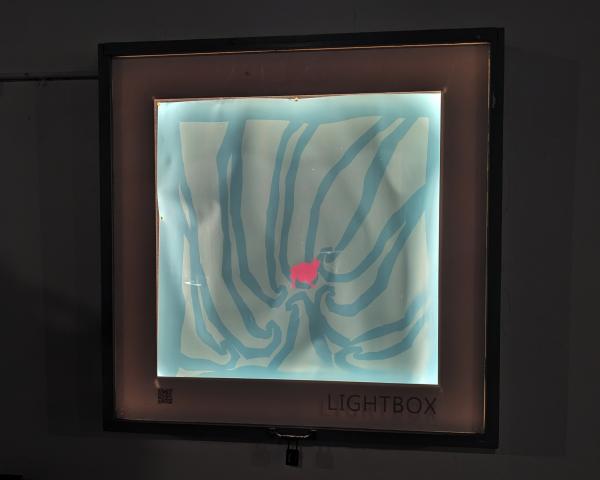
Tawhirimatea did not agree with the separation of his parents because he longed for his father. As a result he tore his eyes out and threw them into the sky. This is a contemporary take on telling that story. Using kowhaiwhai and the colour blue to show the sky or Ranginui and the komako as a depiction of Tawhirimatea sinking in his loneliness.
This work is about the importance of relationships and how they help us grow as people.
Instagram: @louismikaereart
Images
Louis Mikaere, I Miss You
Graphic Narrative . グラフィック·ナラティブ
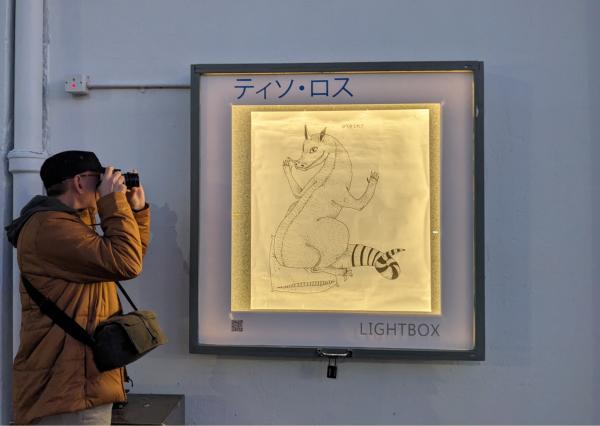
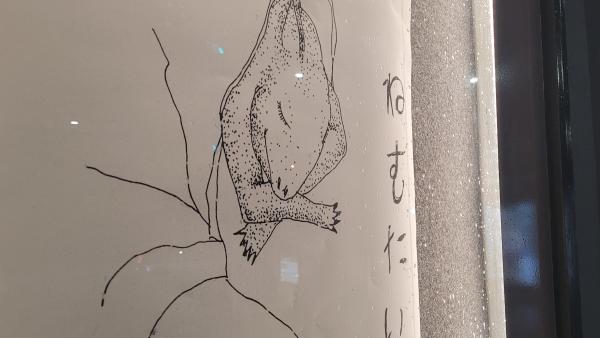
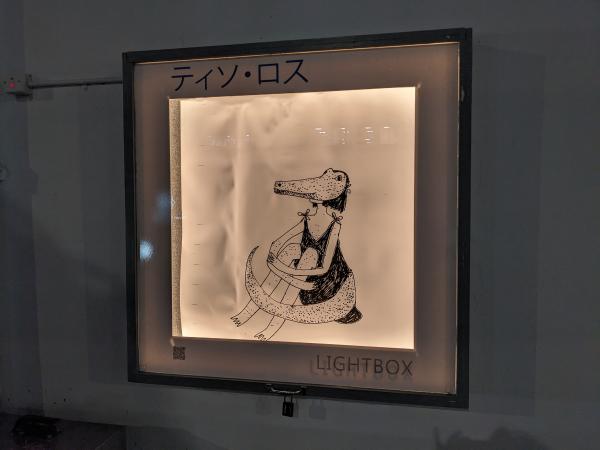
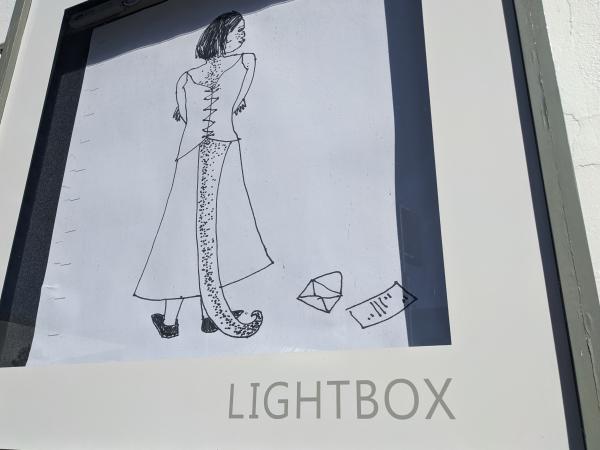
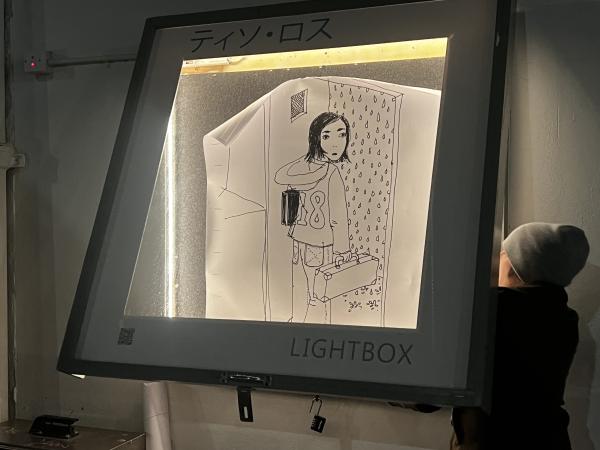
Tiso Ross is a DFA honors graduate from the Dunedin School of Art, Ōtepoti Dunedin, Aotearoa. Tiso worked in photographic, electronic art and illustration between 1992 and 2000 but has had a long ‘pause' from making or exhibiting until recently.
Tiso spent over a decade living in Japan where the body of this work being exhibited was created. Termed ‘graphic narratives’ by a friend, these works aim to arrange space for reflection and connection when glimpsed by passersby.
Tiso lives in Motu Kairangi, Aotearoa New Zealand.
システル·ホール·ライトボックス
ティソ·ロスは、ニュージーランド、ダニーデン(オテポティ)にあるダニーデン美術学校(DFA)を優秀な成績で卒業しました。1992年から2000年にかけて、写真、エレクトロニックアート、イラストレーションの分野で活動していましたが、最近まで制作や展示活動は長い間休止していました。
ティソは10年以上日本に住んでおり、そこで本展の作品が制作されました。
友人により「グラフィック·ナラティブ(物語)」と名付けたこれらの作品は、通りがかった人が見た時に、内省とつながりを生む空間を作り出すことを目的としています。
Images
Tiso Ross, Bikurishita, 4 - 10 August 2025
Tiso Ross, Nemutai deshyo, detail, 11 - 17 August 2025
Tiso Ross, Wani no warau, detail, 18 - 24 August 2025
Tiso Ross, Tegami, 25 - 31 August 2025
Tiso Ross, Doushaburi, 1 - 7 September 2025
Getting To Know You
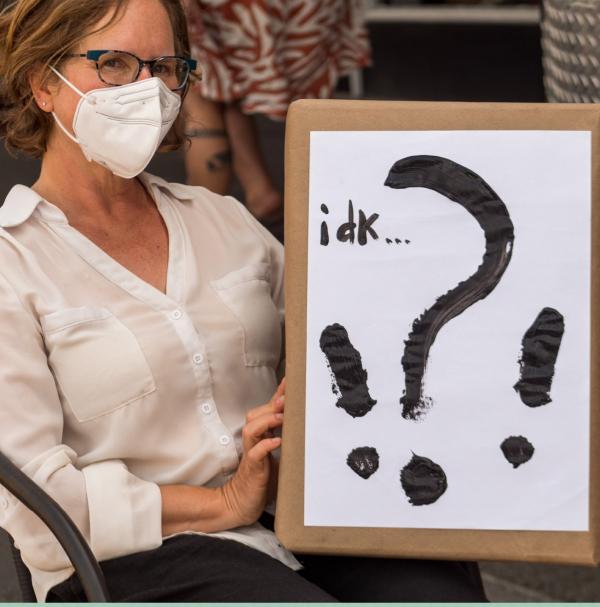
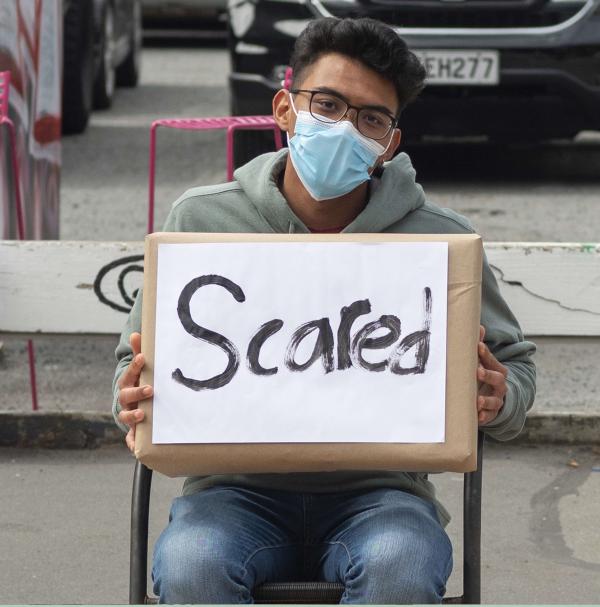
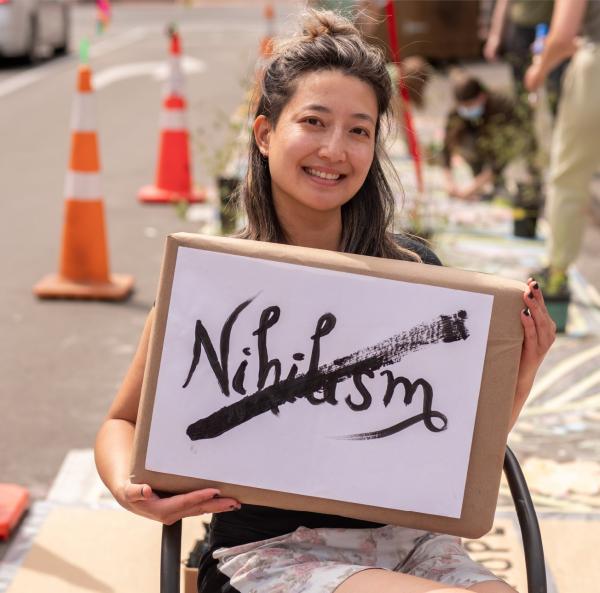
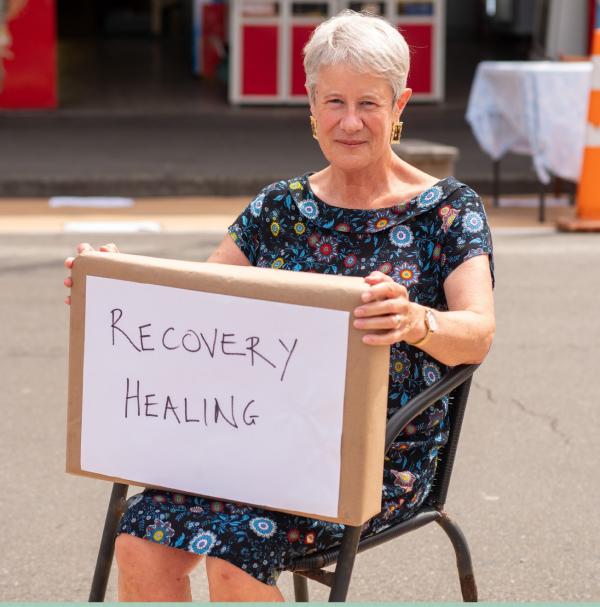
ARTISTS:
Kedron Parker, Sondra Bacharach & Lorenzo L Buhne
BIOS:
Kedron Parker is an artist based in Ōwhiro Bay, whose practice is collaborative, conceptual, and often includes elements of photography and video.
Dr. Sondra Bacharach is based in Island Bay and is an Associate Professor of Philosophy at Victoria University.
Lorenzo L. "Cheech" Buhne is an award winning young photographer and is currently in year 10 at Wellington High School.
PROJECT:
Getting To Know You:
Socially Distanced Portraits in the Time of Covid
SYNOPSIS:
- Getting to Know You begins with a 5-10 minute engagement with passers by, where we invite them to have a "check-in" about their experience with Covid.
- We then ask "If you had to pick one word.... What would be your Covid Word?" as we continue our conversation reflecting on the multiple ways that Covid has has (and continues to) impacted our lives.
- We then invite them to paint the word on a sign, and be photographed with it.
Taste It, Don't Waste It
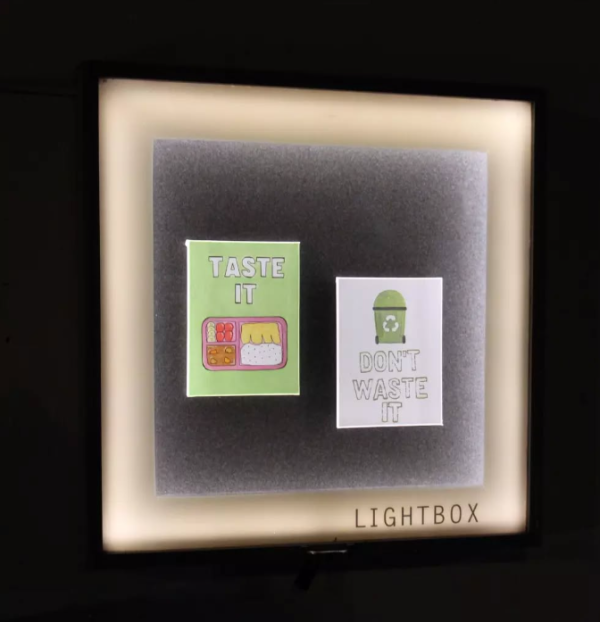
"From a young age, my mom taught us not to waste or play around with food."
The paintings in the Lightbox are by 13-year-old artist Harley Jaydana Selan from Papua New Guinea.
Her urgent message has been on display since Christmas as a reminder to step away from the competitive consumption that marks too many of our celebrations.
"These are two pieces of art that were inspired by the lack of food distribution across the globe. I am very passionate about art. Art is a way to step away from reality and lose track of time doing something I love. These two pieces of art are a way to express my passion and send a powerful message to the world."Harley Jaydana Selan
Redaction 1
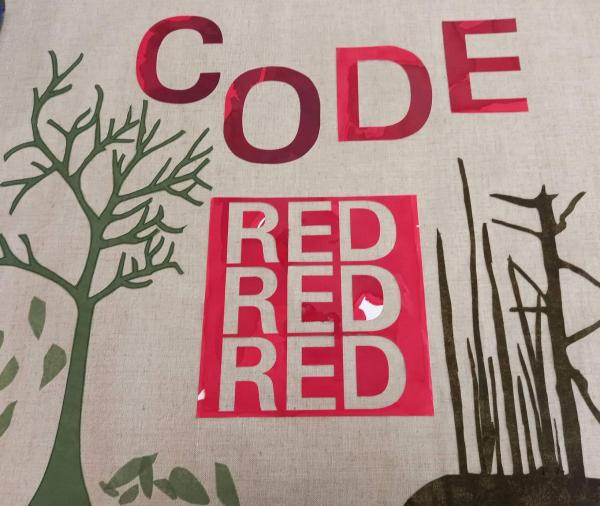
This work was originally going to be a response to the confusion I felt in relation to the language associated with climate change. The adoption of the term Code Red left me with a sense of hopelessness and disempowerment. I felt the world was fading; we were
tumbling into potential oblivion, however while creating the original work I saw David Attenborough: A Life on Our Planet, his legacy film to the world. He clearly explained the issue and proposed clear steps we can take to avert the impending climate disaster.
Sadly, while out with a small group a week later, two people, while discussing the film, stated they believe this is all a conspiracy and that what is happening in Pakistan and Europe is cyclable. We are going to go from a green world to a dead world by the next century unless we make some changes.
Materials: Repurposed wallpaper, card and florist materials and ink
Code Red For Humanity is a series of textile, paper and fibre works by 6 artists responding to the global climate crisis. On show in the Lightbox May to October, 2022.
Barbara Wheeler - Lightbox Curator
Code Red
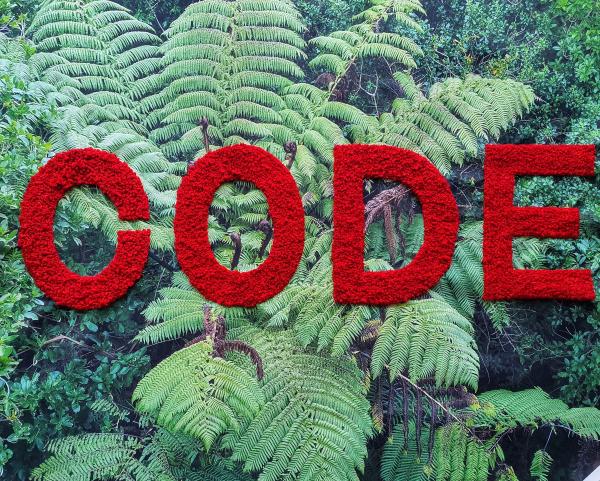
Zealandia in Wellington is a protected habitat for endangered species that is critically important because of human impacts on nature. As we live our lives alongside Zealandia, driving to and from across the city, who is enabling citizens to reduce greenhouse gas emissions? And who remembers that there’s a global crisis anyway? We are numb to it.
Code Red For Humanity is a series of textile, paper and fibre works by 6 artists responding to the global climate crisis. On show in the Lightbox May to October, 2022.
Barbara Wheeler - Lightbox Curator
Specimen
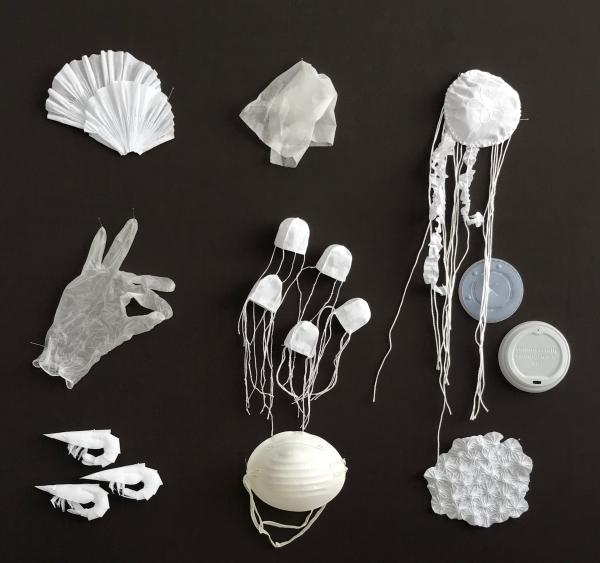
Artist Statement
The covid 19 pandemic has led to a huge increase in single use plastics including disposable masks, test kits, takeaway cups, lids and cutlery and packaging from online orders. This has contributed to an extra 8 million tons of plastic waste, with 25,000 tons of that entering the oceans. Sadly, masks, lids, floating plastic bags and gloves all look edible to seabirds such as Albatross, turtles and whales.
Materials: plastic and found objects
Code Red For Humanity is a series of textile, paper and fibre works by 6 artists responding to the global climate crisis. On show in the Lightbox May to October, 2022.
Barbara Wheeler - Lightbox Curator
Code Red
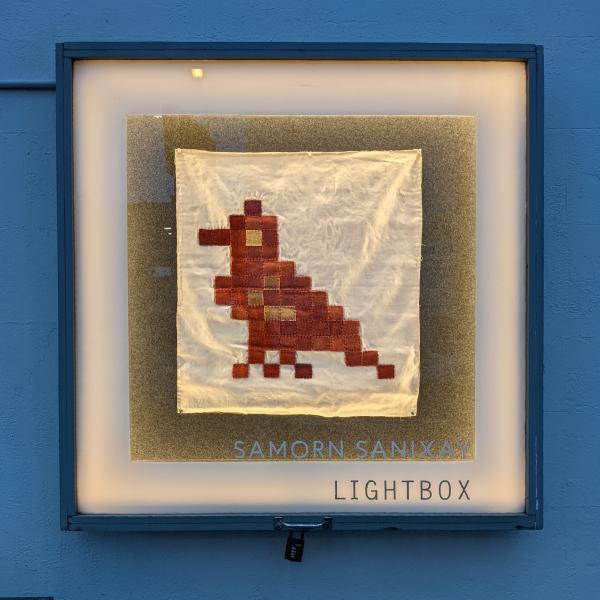
Materials:: Vintage Australia felt merino wool squares dyed using Eucalyptus mannifera and Eucalyptus globulus on mulberry silk handwoven by artist.
Artist Statement:
This piece is a reflection about the current state of the world. At the time of making, there was flooding for the second time in northern New South Wales, Australia and Russia had invaded Ukraine. This work is inspired by a Ukrainian cross stitch pattern called ‘The Tree of Life’ with two birds, reflecting on my own Lao heritage and how often birds are used in all textile crafts from weaving to embroidery. Flowers and animals celebrate the turn of seasons, mark auspicious events and even indicate rank and beauty. These symbols are understood by the entire society and bestow poetry and magic upon the handmade textiles associated with rituals and celebrations such as Buddhist or lunar new year and weddings.
Birds are not depicted on clothes but rather towels or blankets for newlywed couples. Flowers and birds on cloth are ritual symbols and possess immortal beauty and power. Birds on cloth symbolise a change in season or waiting for news, possibly good news.
Code Red For Humanity is a series of textile, paper and fibre works by 6 artists responding to the global climate crisis. On show in the Lightbox May to October, 2022.
Barbara Wheeler - Lightbox Curator
Atlas; Bearer Of The Heavens
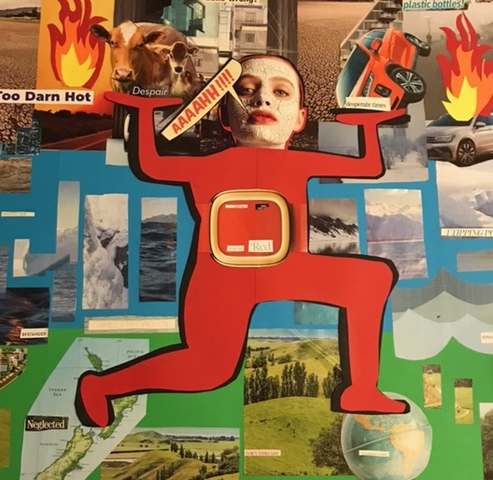
Women hold up 50% of the sky. This collage brings Aotearoa New Zealand into the protector’s role, while it recognises that we are also contributing to the climate crisis. This work encourages us to see our strength within.
Code Red For Humanity is a series of textile, paper and fibre works by 6 artists responding to the global climate crisis. On show in the Lightbox May to October, 2022.
Barbara Wheeler - Lightbox Curator
Don’t Mind The Forest
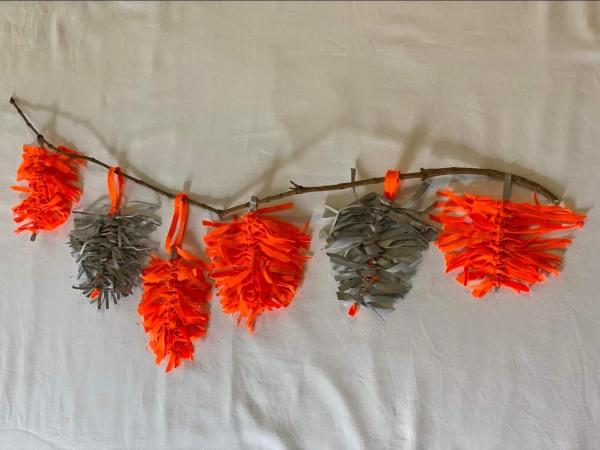
Many fabrics start life as a tree - Viscose, Rayon, Lyocell, Modal and Tencel. Every year, 150 million trees are cut down to create fabric. A significant amount of the global viscose supply still originates from ancient and endangered forests.
Don’t Mind The Forest is a reflection on the environmental price we are paying for our clothing and textiles.
Materials: Waste Fibre and Twig
Code Red For Humanity is a series of textile, paper and fibre works by 6 artists responding to the global climate crisis. On show in the Lightbox May to October, 2022.
Barbara Wheeler - Lightbox Curator